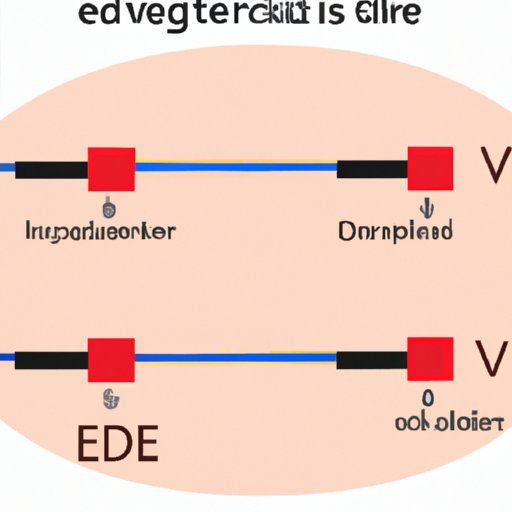Introduction
A diode is an electronic device with two terminals that acts as a one-way valve for electric current. It allows current to flow through it in only one direction and blocks the current from flowing in the opposite direction. Diodes are commonly used in many types of electronic circuits, such as rectifiers, voltage regulators, signal mixers, and switches. In this article, we’ll explore how a diode works and what its function is.

Exploring the Basics of Diodes: How They Work and Their Function
Diodes are composed of two main components: a semiconductor material and two electrodes, called the anode and cathode. The semiconductor material is typically made of silicon or germanium, and the electrodes are connected to either side of the semiconductor material.
Diodes have two distinct electrical properties that determine how they work. The first property is called forward bias. When a positive voltage is applied to the anode and a negative voltage is applied to the cathode, current will flow through the diode in one direction. This is known as forward bias.
The second property is called reverse bias. When a negative voltage is applied to the anode and a positive voltage is applied to the cathode, current will not flow through the diode. This is known as reverse bias.
Diodes come in several different types, depending on their purpose. Some common types of diodes include light-emitting diodes (LEDs), Schottky diodes, Zener diodes, and tunnel diodes.
A Comprehensive Guide to the Working Principles of a Diode
To understand how a diode works, it’s important to understand the principles of forward bias and reverse bias. When a positive voltage is applied to the anode and a negative voltage is applied to the cathode, current will flow through the diode in one direction, from the anode to the cathode. This is known as forward bias.
When a negative voltage is applied to the anode and a positive voltage is applied to the cathode, current will not flow through the diode. This is known as reverse bias. Reverse bias prevents the current from flowing in the opposite direction, from the cathode to the anode.
It’s also important to understand the direction of current flow. Current flows from the anode to the cathode when a diode is forward biased, and it does not flow in the opposite direction when the diode is reverse biased.
The characteristics of a diode can be analyzed using a graph known as the diode curve. This graph shows the relationship between voltage and current for a given diode. From this graph, one can determine the breakdown voltage, forward voltage, and other characteristics of the diode.

An Introduction to Diodes: All You Need to Know
Diodes have several advantages over other types of electronic components. They are small, inexpensive, and require very little power to operate. They are also easy to use and can handle high voltages and currents.
On the downside, diodes are limited in their applications. They cannot amplify signals and are not suitable for higher frequency applications. Additionally, they generate heat when operating and can be damaged if too much current is passed through them.
Diodes are commonly used in many types of circuits, such as rectifiers, voltage regulators, signal mixers, and switches. They are also widely used in telecommunications and computer systems.
How Do Diodes Work? A Step-by-Step Analysis
Setting up a diode circuit is relatively simple. The diode is placed in series with the circuit, with the anode connected to the positive terminal and the cathode connected to the negative terminal.
Once the diode is in place, the working principle of the diode can be explained. When forward biased, the diode allows current to flow from the anode to the cathode. When reverse biased, the diode prevents current from flowing in the opposite direction.
In some cases, the diode may not work properly due to faulty wiring or a defect in the diode itself. Troubleshooting these issues can be difficult, but it’s important to check the wiring and replace the diode if necessary.
Conclusion
Diodes are essential components in a wide variety of electronic circuits. They allow current to flow in one direction while blocking current from flowing in the opposite direction. Understanding how diodes work is essential for designing and troubleshooting electronic circuits.
(Note: Is this article not meeting your expectations? Do you have knowledge or insights to share? Unlock new opportunities and expand your reach by joining our authors team. Click Registration to join us and share your expertise with our readers.)
